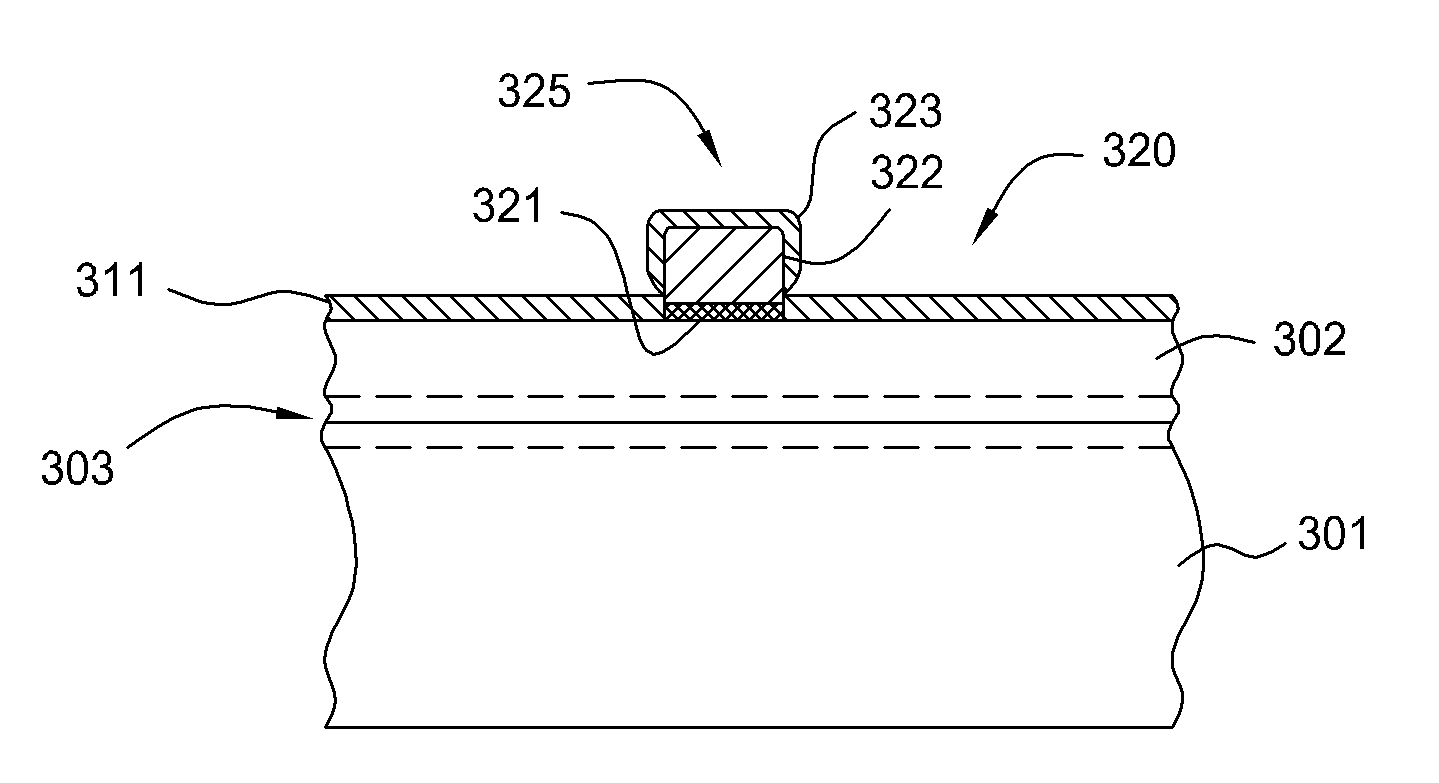High-aspect ratio anode and apparatus for high-speed electroplating on a solar cell substrate
a solar cell substrate and high-aspect ratio technology, applied in the direction of application, optical elements, vacuum evaporation coating, etc., can solve the problems of greater resistive loss, loss of efficiency, and discontinuous formation of thin fingers of conductors by screen printing process
- Summary
- Abstract
- Description
- Claims
- Application Information
AI Technical Summary
Benefits of technology
Problems solved by technology
Method used
Image
Examples
example 1
[0081]In one example, the electrolyte is an aqueous solution that contains between about 200 and 250 g / l of copper sulfate pentahydrate (CuSO4.5(H2O)), between about 40 and about 70 g / l of sulfuric acid (H2SO4), and about 0.04 g / l of hydrochloric acid (HCl). In some cases it is desirable to add a low cost pH adjusting agent, such as potassium hydroxide (KOH) or sodium hydroxide (NaOH) to form an inexpensive electrolyte that has a desirable pH to reduce the cost of ownership required to form a metal contact structure for a solar cell. In some cases it is desirable to use tetramethylammonium hydroxide (TMAH) to adjust the pH. Could go to high copper concentration with organic complexing agent to solution, such as MSA. In one aspect, a low acid chemistry is used to complete the high speed deposition process. An example of some exemplary copper plating chemistries that may be used for high speed plating is further described in commonly assigned U.S. Pat. Nos. 6,113,771, 6,610,191, 6,350...
example 2
[0082]In another example, the electrolyte is an aqueous solution that contains between about 220 and 250 g / l of copper fluoroborate (Cu(BF4)2), between about 2 and about 15 g / l of tetrafluoroboric acid (HBF4), and about 15 and about 16 g / l of boric acid (H3BO3). In some cases it is desirable to add a pH adjusting agent, such as potassium hydroxide (KOH), or sodium hydroxide (NaOH) to form an inexpensive electrolyte that has a desirable pH to reduce the cost of ownership required to form a metal contact structure for a solar cell. In some cases it is desirable to use tetramethylammonium hydroxide (TMAH) to adjust the pH.
example 3
[0083]In yet another example, the electrolyte is an aqueous solution that contains between about 60 and about 90 g / l of copper sulfate pentahydrate (CuSO4.5(H2O)), between about 300 and about 330 g / l of potassium pyrophosphate (K4P2O7), and about 10 to about 35 g / l of 5-sulfosalicylic acid dehydrate sodium salt (C7H5O6SNa.2H2O). In some cases it is desirable to add a pH adjusting agent, such as potassium hydroxide (KOH), or sodium hydroxide (NaOH) to form an inexpensive electrolyte that has a desirable pH to reduce the cost of ownership required to form a metal contact structure for a solar cell. In some cases it is desirable to use tetramethylammonium hydroxide (TMAH) to adjust the pH.
PUM
| Property | Measurement | Unit |
|---|---|---|
| Fraction | aaaaa | aaaaa |
| Fraction | aaaaa | aaaaa |
| Time | aaaaa | aaaaa |
Abstract
Description
Claims
Application Information
 Login to View More
Login to View More - R&D
- Intellectual Property
- Life Sciences
- Materials
- Tech Scout
- Unparalleled Data Quality
- Higher Quality Content
- 60% Fewer Hallucinations
Browse by: Latest US Patents, China's latest patents, Technical Efficacy Thesaurus, Application Domain, Technology Topic, Popular Technical Reports.
© 2025 PatSnap. All rights reserved.Legal|Privacy policy|Modern Slavery Act Transparency Statement|Sitemap|About US| Contact US: help@patsnap.com



